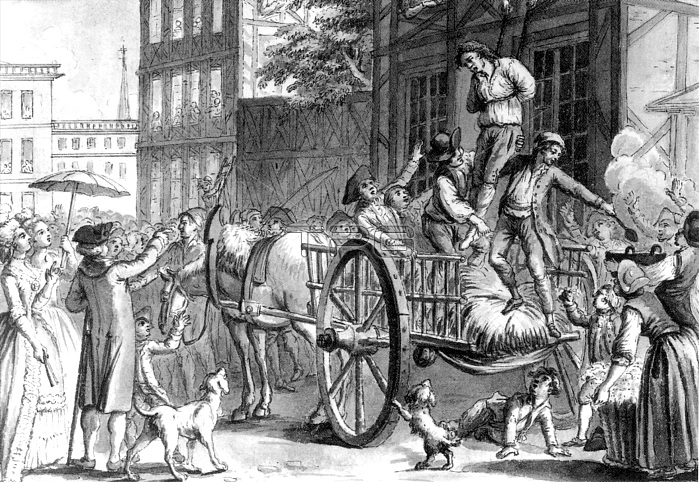
Radical Bostonians attack a government tax collector, coating him with hot, sticky tar and covering him with feathers. Tarring and feathering is a form of public humiliation used to enforce unofficial justice or revenge. It was used in feudal Europe and its colonies in the early modern period, as well as the early American frontier, mostly as a type of mob vengeance. Engraving associated with the Sugar Act passed by Parliament on April 5, 1764, and it arrived in the colonies at a time of economic depression. It was an indirect tax, although the colonists were well informed of its presence. A good part of the reason was that a significant portion of the colonial economy during the Seven Years' War was involved with supplying food and supplies to the British Army. Colonials, however, especially those affected directly as merchants and shippers, assumed that the highly visible new tax program was the major culprit. As protests against the Sugar Act developed, it was the economic impact rather than the constitutional issue of taxation without representation that was the main focus for the colonists. Unknown source.
| px | px | dpi | = | cm | x | cm | = | MB |
Details
Creative#:
TOP22176691
Source:
達志影像
Authorization Type:
RM
Release Information:
須由TPG 完整授權
Model Release:
N/A
Property Release:
No
Right to Privacy:
No
Same folder images:

 Loading
Loading